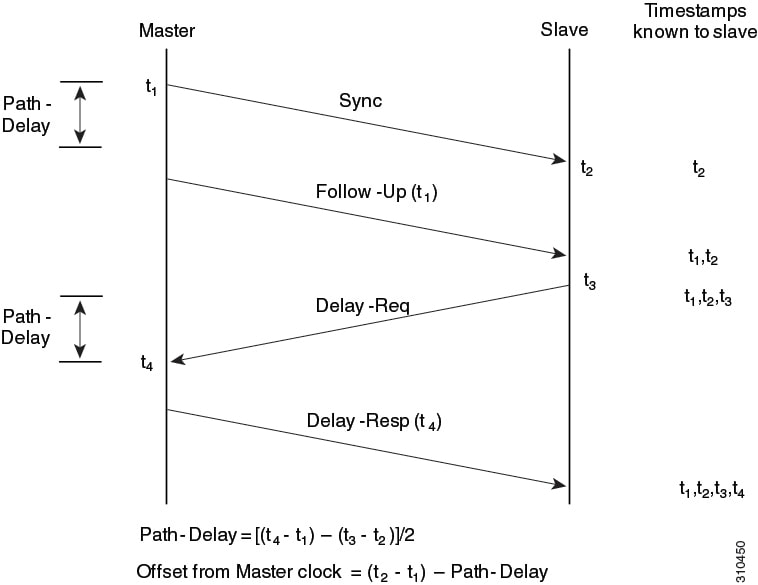
Note
|
The Sync 2 port and GNSS receiver configuration listed below are not supported simultaneously for network synchronization.
Choose only one synchronization method at a time.
|
Global configuration for the telecom profile for Server clock:
ptp
clock
domain 44
profile g.8275.2 clock-type T-GM
!
profile master
transport ipv4
sync frequency 64
announce frequency 8
unicast-grant invalid-request deny
delay-request frequency 64
!
!
interface GigabitEthernet0/0/0/11
ptp
profile master
!
ipv4 address 11.11.11.1 255.255.255.0
!
Global configuration for the telecom profile for Client clock:
Effective Cisco IOS XR Software Release 7.7.1, the encapsulation type for PTP packet transport is now extended to IPv6; you
can now use the transport ipv6 to set this encapsulation type.
ptp
clock
domain 44
profile g.8275.2 clock-type T-TSC
!
profile slave
transport ipv4
port state slave-only
sync frequency 64
announce frequency 8
delay-request frequency 64
!
log
servo events
best-master-clock changes
!
!
interface GigabitEthernet0/0/0/12
ptp
profile slave
master ipv4 10.10.10.1
!
!
ipv4 address 10.10.10.2 255.255.255.0
!
Global configuration with clock type as T-Boundary Clock (T-BC) for the telecom profile:
Effective Cisco IOS XR Software Release 7.7.1, the encapsulation type for PTP packet transport is now extended to IPv6; you
can use the transport ipv6 to set this encapsulation type.
ptp
clock
domain 44
profile g.8275.2 clock-type T-BC
!
profile slave
transport ipv4
port state slave-only
sync frequency 64
announce frequency 8
unicast-grant invalid-request deny
delay-request frequency 64
!
profile master
transport ipv4
sync frequency 64
announce frequency 8
unicast-grant invalid-request deny
delay-request frequency 64
!
log
servo events
best-master-clock changes
!
!
interface GigabitEthernet0/0/0/11
ptp
profile master
!
ipv4 address 10.10.10.2 255.255.255.0
!
interface GigabitEthernet0/0/0/12
ptp
profile slave
master ipv4 10.10.10.1
!
!
ipv4 address 10.10.10.3 255.255.255.0
!




 Feedback
Feedback